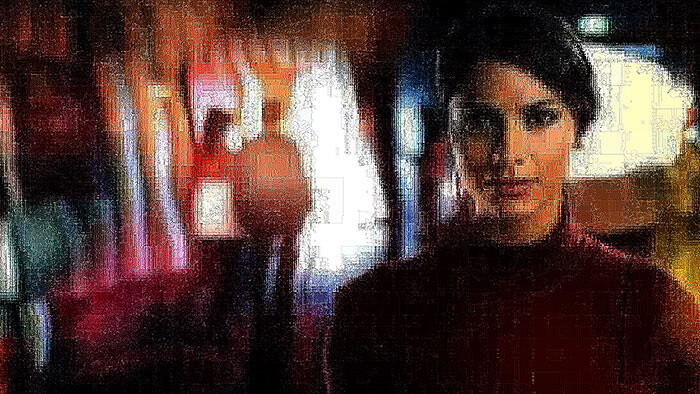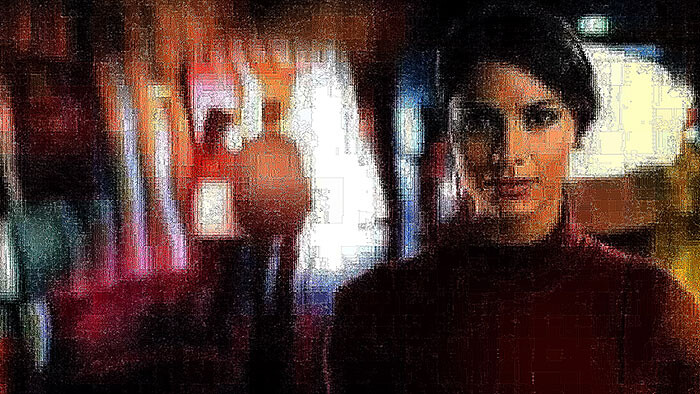Our sense of gravity and orientation is controlled by a little something in our ear. The Otolith Group—Anjalika Sagar and Kodwo Eshun—derives its name from this inner ear doodah. So it’s not too far fetched to suggest that ears guide the group’s visual art practice. And if hearing is important, critical hearing is even more so. The faculty of critical hearing enables the artist to weed out the feedback generated by the debris of failed systems. In other words, the otolith is what Ernest Hemingway would call “a built-in bullshit detector.”
“Westfailure,” the London-based duo’s first solo in Bombay, takes its title from British economist Susan Strange’s essay “The Westfailure System” (1999), in which she argues that Westphalian sovereignty has been entirely incapable of stymieing financial, ecological, and humanitarian meltdowns. A great deal of the Otolith Group’s work has entailed the interruption of Orwellian newspeak with “glitchspeak”—and “Westfailure” aspires to the same.
The Westphalian sovereignty, proposed in the 17th century in Westphalia, Germany, is one such systemic impasse. The peace treaties that emerged initiated a new political order. The sovereign nation-state anchored in territoriality and the absence of unsought external interventions in the domestic realm was key to the new politics. The policies out of Westphalia are now seen as paradigms for our contemporary globalized world overrun with multinational corporations and the like.
The video Anathema (2011) extracts the seductive marrow of high resolution right out of advertising and other digital bodies, and, in doing so, converts irresistible images into spectral abstractions. These low-fi and no-less-hypnotic images are postulated as a slow-mo counter to the acceleration of hypercapital: an electronic/digital civil disobedience of sorts. Anathema is predicated on the belief that systems can still be surprised and disrupted.
The video Communists Like Us (2006-10) conflates fact and fiction by overlaying archival photographs of journeys made by Indian stateswomen to the USSR, Japan, and Chairman Mao’s China, with English subtitles from Jean-Luc Godard’s La Chinoise (1967). The subtitles convey a sixteen-minute interaction between an activist, the philosopher Francis Jeanson, and a Maoist student.
Elsewhere, in Daughter Products (2011), a suite of archival images, we witness socialist camaraderie as delegations visit factories, schools, museums, etc. The images belong to Anasuya Gyan Chand, the former President of the National Federation of Indian Women (who also happens to be Sagar’s grandmother). These images act as delegates from the past: they disperse doubt in favor of previous political uncertainties and provide us with the hope of disturbing the temporal autonomy of the markets, myths and mores.
The past is summoned again in two closely related works: Be Silent for the Ears of the God Are Everywhere (2006) and One Out of Many Indophilias (2010). While the former explores spiritualism as vehiculated by guru figures adept at skilfully infantalizing their listeners, the latter—a huge vinyl print comprising a line-up of album, book, and film jackets such as Carlos Santana’s Love Devotion Surrender (1973), Pier Paolo Pasolini’s The Scent of India (1984), and TVTV’s Lord of the Universe (1974)—is one of the many fallouts of the aforementioned cack-handed narrative. These numinous images are a compendium of desires and afflictions triggered by romantic politics and the commerce of spirituality.
The group draws no distinction between criticism-creation and theorist-artist. Having said that, the order of the nouns is indicative of this reviewer’s assessment of the situation. Despite their commitment to interplay, it’s fair to say that the Turner-Prize-nominated artists’ work is contingent primarily on theory; the rest follows.
The images that comprise “Westfailure” allude and direct us to the discourse that lies outside the frame. Vis-à-vis this current exhibition, the discourse also subsumes works by the artists that were shown outside the exhibition. Nervus Rerum (2008), Latin for the nerve of things, and Otolith II (2007) the second installment of the Otolith Trilogy (2003-2009) are more than just collateral screenings; they involute the debate by accommodating and occupying different times.
The Dharavi of Otolith II is part of a speculative future where this dense Bombay slum is projected as the city-in-waiting. Significantly, slums across India and elsewhere function in a manner that defy the parameters laid out in the Peace of Westphalia. By extension, the slumdawgs pose a threat to the homogenous control sought by corporate czars and czarinas. Nervus Rerum addresses the difficulty of representation of crises—in this case, the Palestinian refugee camp of Jenin—that have been severely overdetermined by our visual culture. In light of “Westfailure,” Jenin too is held ransom by Westphalian sovereignty and Israel.
Predictions mattered when things weren’t happening as fast. The predictive arts are irrelevant now. In “Westfailure” and outside it, the Otolith Group often intervene into the past to effectuate doubt and to make our present incompatible with extant formats.






